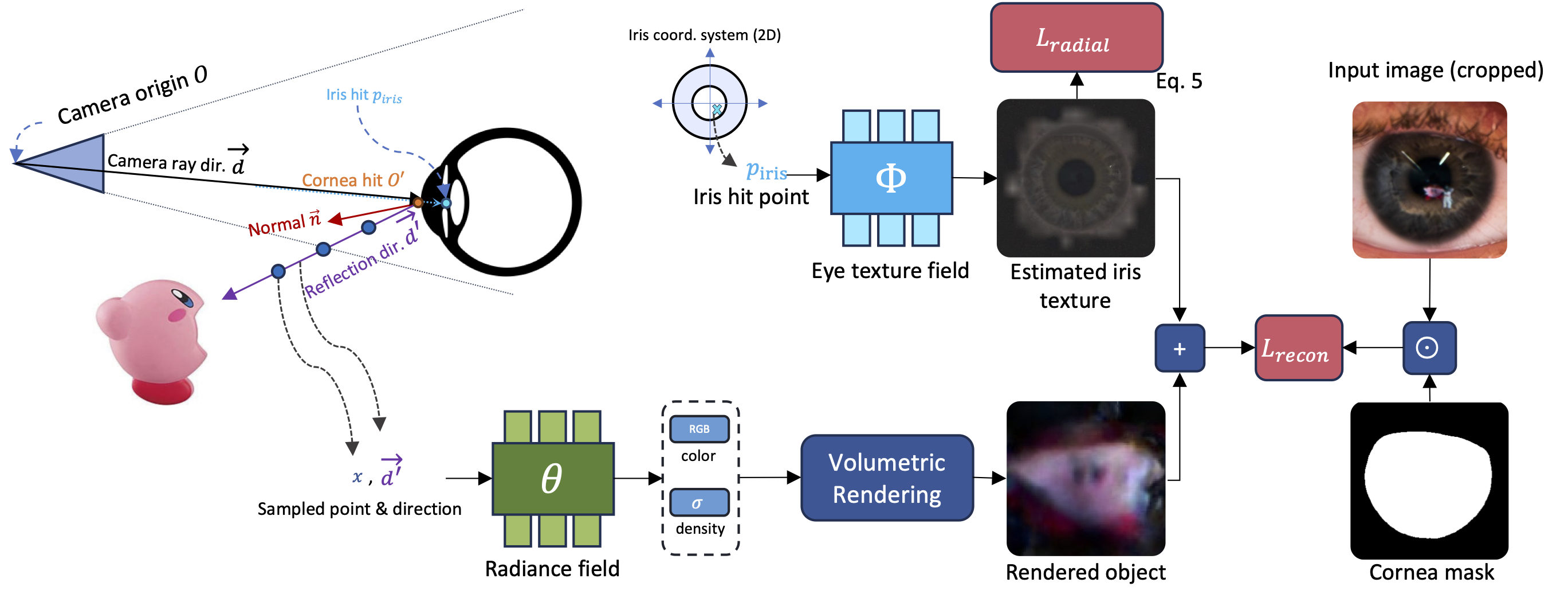How we did it?
The cornea geometry is approximately the same across all healthy adults. Because of this fact, if we count the pixel size of a person's cornea in the image, we can compute exactly where their eyes are. Using this insight, we train the radiance field on the eye reflections by shooting rays from the camera, and reflecting them off the approximated eye geometry. To remove the iris from showing up in the reconstruction, we perform texture decomposition by simultaneously training a 2D texture map that learns the iris texture.

However, approximating the eye pose just from the image is always very noisy. To address this issue, we perform eye pose optimization which is critical for performance as we show below.
